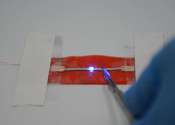MAX-phase ceramics can self-heal cracks even at room temperature
Ceramics are resilient to heat and extreme environments, but they are fragile and crack easily. Recently, in a study published in Science Advances, researchers at Texas A&M University have discovered a self-healing mechanism ...
Sep 10, 2021
0
51









